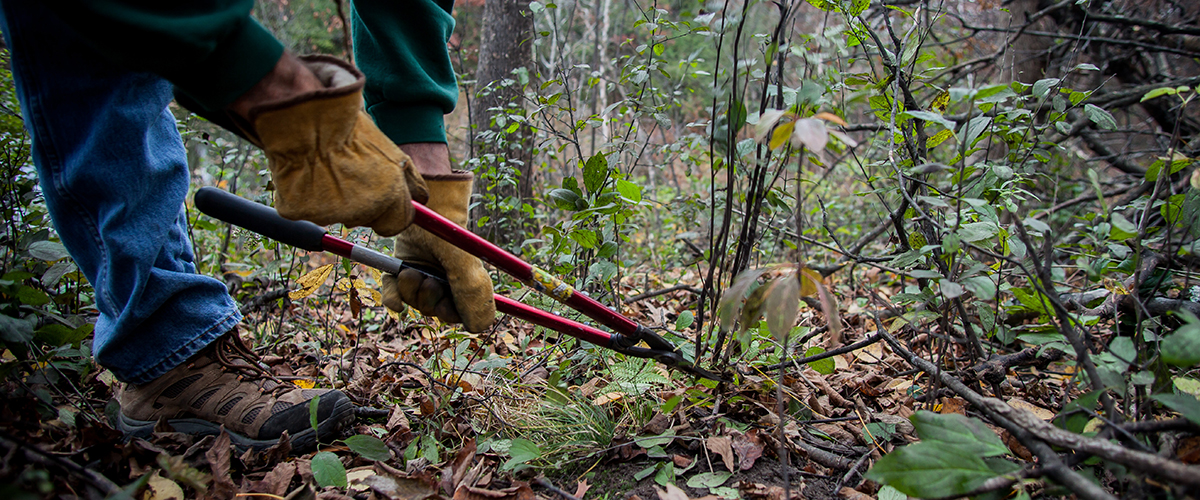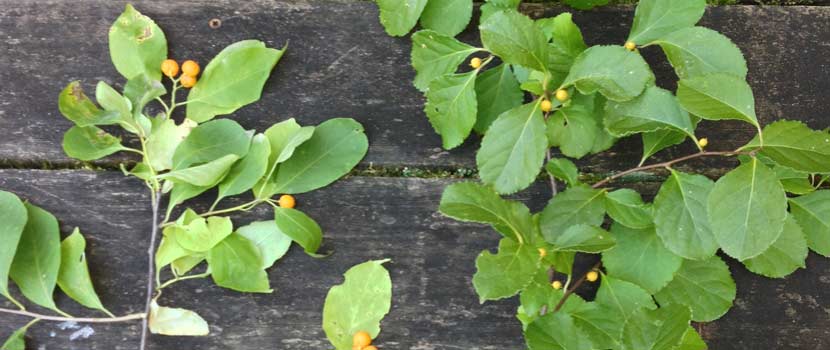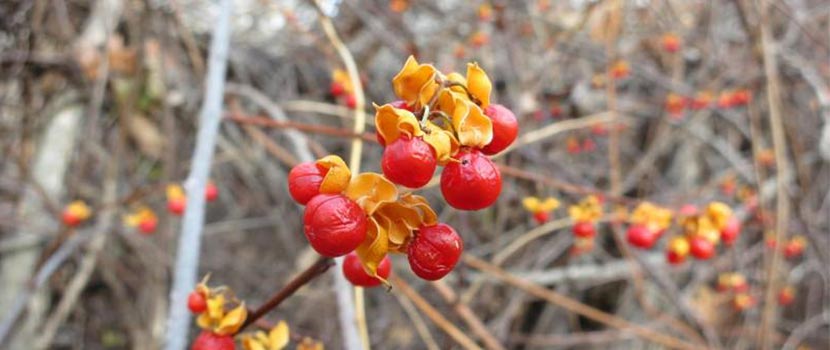Invasive Species
An invasive species is a non-native plant, animal or pathogen that spreads rapidly into native communities causing ecological or economic harm.

Currently, the Park District is host to more than 40 species of plants, animals and diseases that have shown some degree of invasiveness, with more potential invaders on the horizon. They are being transported faster than ever due to a changing climate, availability of invasive plants at retail nurseries and through the internet, and the increased recreational use within our parks.
The spread of invasive species has become a major issue facing natural resource management within Three Rivers Park District. Forestry staff works hard to contain invasive plants and pests, to limit the spread and lessen the damage they cause.
As a member of the Minnesota Invasive Species Advisory Council, Three Rivers works closely with many organizations including the Minnesota Department of Natural Resources (DNR) and the Minnesota Department of Agriculture (MDA) in the effort to control and eradicate invasive species.
Aquatic (Water) Invasives
Aquatic Invasive Species (AIS) are non-native plants, animals and pathogens that can thrive in our waterways and cause environmental damage and economic loss. AIS are an increasing problem in our watersheds.
Terrestrial (Land) Invasives
Terrestrial Invasive Species are non-native plants, animals and pathogens that disrupt and damage local forests and prairies. Species of immediate concern include the emerald ash borer (EAB), an invasive beetle that kills ash trees.

Invasive Species Plan
Three Rivers’ efforts are guided by an Invasive Species Plan that focuses on prevention, early detection and rapid response when dealing with invasive species. The plan also includes specific native species management goals as well as health and safety concerns.
Prevention
A prevention strategy is the first line of defense. All Park District departments work to reduce the transportation and introduction of invasive materials by cleaning contaminated vehicles and equipment before moving off-site. Three Rivers supports the Play Clean Go and Work Clean Go campaigns by being careful and accountable for stopping the spread of invasive species.
Early Detection
Early detection is key to controlling invasive species. Trained staff and volunteers report and map invasive populations so they can be contained and wiped out before becoming established. Smaller infestations can be removed more quickly using fewer resources than established infestations and fast treatment helps to prevent them from spreading to new areas.
Prioritized Management
Work continues on current populations of invasive species as budgets and staffing allow. They are prioritized for treatment based on factors including:
- Regulatory status under MN Noxious Weed Law
- Current occurrence and distribution of the species
- Potential for spread and negative impact
- Type and values of the site affected.
Collaboration
The Three Rivers Park District values collaboration with partners to find new solutions for fighting invasive species and improved ways to manage them.
What You Can Do

What you can do to help protect our natural resources from invasive species:
- Comply with firewood restrictions, use certified weed-free hay and dispose of plant debris in the trash.
- Be a good neighbor. Be on the look-out for the most troublesome invasive plants and remove them from your property.
- Consider replacing non-native plants with natives – These are good for pollinators too! See Midwest Invasive Plant Network - Invasive Species and Gardening.
- Volunteer to assist ongoing efforts and at Beat Back Invasives events in spring and fall.
- Get educated with tips from the Nature Conservancy and Play Clean Go.
- Support the monitoring and removal of invasive species through a donation.
Volunteer Removal Events
Volunteers are an important part of the effort to fight the spread and impact of invasives.
Ongoing volunteer efforts around the Park District include the Rapid Response and Early Detection (R2ED) team, Invasive Blitz, Beat Back Invasives and Adopt-a-Woodlot programs.
Volunteer
There are plenty of ways to volunteer in cooperation with the Three Rivers Department of Natural Resources. Put your time to good use by helping to protect and enrich our earth!
Related Blog Posts
Controlling Invasives: Anatomy of an Ecological Restoration
By: Paul Kortebein
Curious what goes into ecological restoration? Follow along as Paul Kortebein, Manager of Forestry and Horticulture, explains how Three Rivers is managing the invasive species Oriental bittersweet in parks.
Carrots: The Good, The Bad and The Deadly
By: Missy Anderson
The carrot family of plants is broader than just the orange roots we eat. Learn what makes a carrot a carrot, how to identify plants in the carrot family and which ones to avoid at all costs.
Colorful Winter Vines: A Bittersweet Problem
By: Missy Anderson
Around the Twin Cities, there is a woody vine that looks similar to one of our native vines — but is highly invasive. Read on to learn why oriental bittersweet is a problem, how to distinguish it from American bittersweet and what you can do to help.



